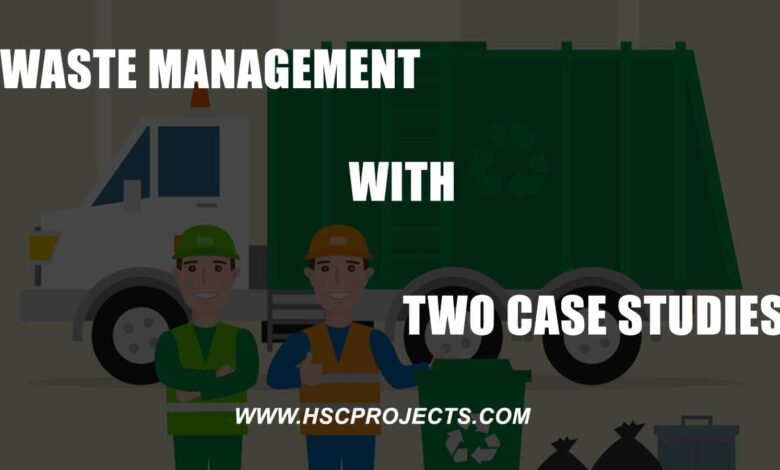
Waste Management Project with 2 Case Studies – Economics
INTRODUCTION TO WASTE MANAGEMENT PROJECT:
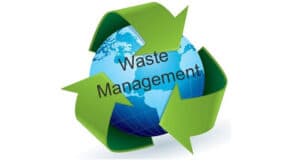
Waste management (or waste disposal) includes the activities and actions required to manage waste from its inception to its final disposal. This includes the collection, transport, treatment and disposal of waste, together with monitoring and regulation of the waste management process. It is important to let cildren learn from a young age about waste management, the best way for it is a waste management project.
Waste can be solid, liquid, pr gas & each type has different methods of disposal and management. Waste management deals with all types of waste including industrial, biological and household. In some cases, waste can pose a threat to human health.
Health issues are associated with the entire process of waste management. Health issues are associated can also arise indirectly or directly. Directly through the handling of solid waste and directly through the consumption of water soil and food.
Waste is produced by human activity, for example, the extraction and processing of raw materials waste management are intended to reduce the adverse effects of waste on human health, the environment or aesthetics. Waste management practices are not uniform among countries (developed and developing nations); regions (urban and rural areas), and residential and industrial sectors can all take different approaches.
Proper management of waste is important for building sustainable and livable cities, but it remains a challenge for many developing countries and cities. Effective waste management is quite expensive, usually comprising 20 % – 50% of the municipal budget.
IMPORTANCE OF WASTE MANAGEMENT:
Managing waste is a tedious take and thus the role of waste management services comes into play. Each organization has its way of tackling waste or trash. But, waste management services can extend a helping hand in managing the waste more efficiently and effectively. Some of the various techniques and practices which are an extremely important part of waste management services include :
Proper Mechanism For Waste Collection:
Be it school, company, factories or corporate office proper disposal of waste materials is important for every organisation. Hence each organization can aim at providing adequate baskets, bins and barrels for collecting waste materials to ensure good hygiene
Regular Cleaning & Waste Removal Practices:
All interior spaces of any organization ranging from schools, commercial buildings, etc must be well maintained and properly cleaned. It would generally include the removal of sanitary and food waste, trash and other waste materials. This would ensure a healthy working environment for the public, employees, workforce, teachers, etc.
Greener Practices For Cleaning:
Waste can be categorized into biodegradable and non-biodegradable. Further mores. It can be subdivided into recyclable. Such categorization can help to clean in a better way through safe and eco-friendly means. Green practices should thus be encouraged in organizations for the health and safety of employees.
PRINCIPLE OF WASTE MANAGEMENT:
Population and household growth in Hertfordshire put increasing pressure on waste management in the country.
Consequently, the need to actively manage waste streams in Hertfordshire has never been more significant.
Sustainable waste management can be actively addressed through the planning process in the following ways :
- Reducing the number of materials required for the building.
- Reducing the amount of waste generated
- Management of construction and demolition waste.
- Materials specifications (e.g. use of reclaimed and recycled materials)
- Provision of recycling space facilities.
TYPES OF DUSTBINS:

Green Bin:
The green coloured bin is used to dump biodegradable waste. The bin could be used to dispose of off wet/organic material including cooked food/leftover food, vegetable/fruit peels, eggshell rotten eggs, chicken/fish bones, tea bags/coffee grinds, coconut shells and garden waste including fallen leaves/twigs or the puja flowers/garlands will all go into the green bin.
Blue Bin:
The blue coloured bin is used for segregating dry or recyclable left over. This category includes waste like plastic covers, bottles, boxes, cups, toffee wrappers, soap or chocolate wrappers and paper waste including magazines, newspaper, tetra packs, cardboard cartons, pizza boxes or paper cups/plates will have to be thrown into the white bin. Metallic items like tins/can foil paper and containers and even the dry waste including cosmetics, hairs, rubber/thermocol (polystyrene), old mops/dusters/sponges.
Black Bin:
Black bins, make up the third category, which is used for domestic hazardous waste like sanitary napkins, diapers, blades, bandages, CFL, tube lights, printer cartridges, broken cells, expired medicine etc.
METHODS OF WASTE DISPOSAL:
The nationally accepted framework or approach for achieving reductions in waste arisings and sustainable waste management is the waste hierarchy.
Various Methods of Waste Disposal:
Although there are many methods of disposing of waste, in the section let’s take a look at some of the most commonly used methods that you should know about the waste management
Landfills:

Throwing daily waste/garbage in landfills is the most popularly used method of waste disposal used today. This process of waste disposal focuses on the land. Landfills are commonly found in developing countries.
There is a process used that eliminates the orders and danger of waste before it is placed into the ground. While it is true this is the most popular form of waste disposal, it is certainly for from the only procedure and one that many also bring with it an assortment of space.
This method is becoming lets these days, thanks to the lack of space available and the strong presence of methane and other landfill gases, both of which can cause numerous contamination problems.
Landfills give rise to air and water population which severely affects the environment and can prove fatal to the lives.
Incineration/Combustion:
Incineration or combustion is a type of disposal method in which municipal solid wastes are burned at high temperatures. The process eventually converts them into residues and gaseous products. The biggest advantage of this type of method is that it can reduce the volume of solid waste to 20 to 30 per cent of the original volume. Additionally, it also decreases the spaces they take up while also reducing the stress on landfills.
Incinerators are primarily used in thermal treatment where solid waste materials are converted to heat, gas, steam, and ash. Incineration is also widely popular in countries where landfill space is no longer available, such as the US and Japan.
Recovery & Recycling:

Resource recovery is the process of taking the useful discarded item for a specific next use. These discarded items are then processed to extract or recover materials and resources or convert them to energy in the form of useable heat, electricity or fuel. Recycling is the process of converting waste products into new products to prevent energy usage and consumption of fresh raw materials. Recycling is the third component of the reducing, reusing and recycling waste hierarchy.
The idea behind recycling is to reduce energy usage, reduce the volume of landfills, reduce air and water pollution reduce greenhouse gas emissions and preserve natural resources for future use.
- Plasma Gasification:
Plasma gasification is another form of waste management plasma that is primarily an electrically charged or high ionized gas. Lighting is one type of plasma that produces temperatures that exceed 12,600’F with this method of waste disposal, a vessel uses characteristic plasma torches operating at +10,000’F which is creating a gasification zone till 3,000’F for the conversion of solid or liquid wastes into a gas.
During the treatment of solid waste by plasma gasification, the waste’s molecular bonds are broken down as a result of the intense heat in the vessels and the elemental components. Thanks to the process, the destruction of waste and dangerous materials are found. This form of waste disposal provides renewable energy and an assortment of other fantastic benefits.
Composting:

Composting is an easy and natural biodegradation process that takes organic wastes i.e. remains of plants and garden and kitchen waste and turns them into nutrient-rich food for your plants. Composting, normally used for organic farming occurs by allowing organic materials to sit in one place for months until microbes decompose them.
Note that composting is often deemed to be one of the best methods of waste disposal as it can turn unsafe organic products into downsides. Some people have found it to be slow, while others have observed that it takes a lot of space. But regardless of these issues, many people are still embracing home composting approaches to manage and reduce waste.
WHAT IS LIQUID WASTE?
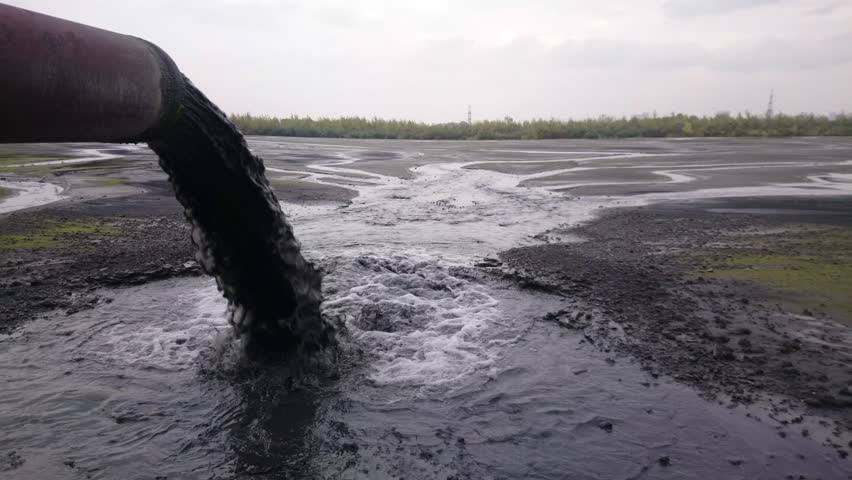
Liquid waste is a major problem in the world, due to approximately 71% of the earth’s surface being covered in water. According to the environmental protection agency (EPA), liquid waste is defined as any waste material that passes the definition of a “liquid” This means that the material must, “pass through a 0.45-micron filter at a pressure differential of 75 psi,” according to the EPA’s provided definition of a liquid
- The main producers of liquid waste are animals and human beings as the natural excretion of waste is flushed into sewage and waste lines.
MANAGEMENT OF LIQUID WASTE:
There are three stages for the treatment of sewage water they are :
Primary Treatment:
It is the process of mechanically removing the solid materials present in the water through metal screening. Gruit chambers and sedimentation. Metal screening removes large floating objects such as a small pieces of wood, rags, masses of garbage and dead insects and animals. The gruit chamber allows the settlement of heavier solids such as sand into the bottom layer.
The wastewater is then allowed to pass into a big sedimentation tank where the liquid spends about 6.8 hours. During this time about 50 to 70 % of the solids settle down under the influence of gravitational force. During the process, a small amount of decomposition takes place by the microorganisms present in sewage breaking down the organic matter present.
The organic matter after breaking down settles down into a larger called sludge. This sludge is removed mechanically primary treatment removes about 60 per cent of floating solid bodies, 30 per cent of oxygen demanding wastes, 20 per cent of nitrogen compounds, and 10 per cent of phosphorous compounds.
Secondary Treatment:
It is the biological oxidation of organic matter. It is achieved by filter method or by sludge process. In the filter method, the wastewater is sprinkled over the surface of a bed of small stones one to two meters deep. When the water percolates through the stone bed, a very complex biological growth of algae, fungi, protozoa and bacteria occurs. By their formation, the wastewater gets oxidised. The oxidised wastewater is then passed into the sedimentation tanks.
The sludge process is a modern method of management of wastewater. The liquid from the sedimentation tank is mixed with sludge collected from the final tank. This sludge is called active sludge as it is rich in aerobic bacteria. (bacteria that can survive only in presence of oxygen). The activated sludge is then subjected to aeration. By aeration, the organic matter of waste liquid gets oxidised into carbon dioxide, water and nutrients. Organisms causing diseases like typhoid cholera are destroyed in the stage.
The oxidised waste liquid is then passed into a secondary sedimentation tank where activated sludge is collected. The volume and characteristics of the sludge are reduced through anaerobic (devoid of oxygen) autodigestion. In this process, complex compounds are broken down into the water, carbon dioxide, methane and ammonia. This substance works as a good fertilizer.
- Tertiary Treatment:
The residue from the earlier two treatment processes still leaves about 10 per cent of suspended solid bodies, 10 per cent oxygen demanding wastes, 30 per cent of nitrogen and 70 per cent phosphorous. This tertiary treatment method is an advanced form of a chemical and physical process. The most common methods in this treatment are the precipitation of suspended particles, filtration with carbon to resolve to dissolve organic compounds and reverse osmosis by passage through a membrane to remove dissolve. Organic-inorganic materials. Chlorination is also required at the end to remove disease-causing bacteria and other germs.
IMPACT ON THE ECONOMY:
Waste Management Costs:
Costs most commonly associated with waste management are the capital cost of infrastructure and equipment and the labour costs of those employed within the system. The costs can be considerably high, especially for a city or region that has to establish new infrastructure.
The costs relate to the type and performance of the system; local factors; and the amount of waste that is generated therefore ideally the amounts collected and treated financing of waste management is an ongoing challenge for many developing economies, municipalities have an insufficient budget and access to finance or funding to carry out basic solid waste management operation such as collect and safe disposal.
The current policy trend is moving toward investment in projects and infrastructure that promote the green economy concept, particularly for low carbon growth.
Waste Prevention:
Through the implementation of waste prevention and waste minimisation practices economic savings can be made across the entire production and manufacturing recycling is one of the main areas receiving funding. Compared to the total amount of donor funds awarded to green projects, these amounts are shamefully and unreasonably low however by raising awareness of the significant contribution that the waste sector can make to the economy this potential could and should be increased.
Recycling & Recovery:
‘waste’ itself is an economic concept given that it implies that resources are produced and used in ways that lead to their disposal as waste, the loss of those resources is an economic loss. When resources can be saved, reused, recovered or used more efficiently there is a net economic gain. The materials recovery industry makes a significant contribution to the economy. The figure below shows the materials recovery industry turnover for the UK and the significant development in recent years.
Residual Waste:
When residual waste is minimised, through waste prevention measures, recycling and recovery operations this results in fewer costs for residual waste management, from collection through to disposal of waste results in net economic costs whereas when waste is considered a resource (material or energy)value can be obtained from it, offsetting the management costs.
WASTE MANAGEMENT MARKET IN INDIA:
Waste management in India falls under the preview of the union ministry of environment, forests and climate change (MOEF & CC). in 2016, this ministry released the solid wastage management (SWM) rules, these rules replaced the municipal solid waste (management and handling) rules, 2000 which had been in place for 16 years. This national policy is not able in that it has acknowledged and included the informal sector (waste pickers) in the waste management process for the first time.
Urban India (about 377 million people) generates 62 million tonnes of municipal solid waste (MSW) each year. Of this, about 43 million tonnes (70%) are collected and 11.9 million tonnes (20%) are treated. About 31 million tonnes (50%) are dumped at landfill sites. With changing consumption patterns and rapid economic growth it is estimated that urban municipal solid waste generation will increase to 165 million tonnes in 2030.
WHY WASTE MANAGEMENT IS THE NEED OF THE HOUR:
Urban India generates 62 million tonnes of waste (MSW) annually. & it has been predicted that this will reach 165 million tonnes in 2030. 45 million tonnes of municipal solid waste is collected annually, out of which 31 million are dumped in landfill sites and just 11.9 million are treated. There are not enough public bins and the available bins are not even covered in many cases, waste overflows out of those bins and ends up going all over the streets.
Waste transporting vehicles is not even covered in many cases which also causes littering of the streets. Many citizens in India recklessly litter the streets with banana leaves or bowls made of dried leaves a few years earlier, those kinds of litter were not that harmful as they were biodegradable and could even be eaten by stray animals. But in India today, what is mostly littered is plastic and in any society, it’s not easy to bring a quick cultural change.
India’s informal recycling sector consists of waste pickers who play a crucial role in segregating and recycling waste, but in most cases, they are not formally trained and at times they burn waste at landfills to keep themselves warm at night and end up setting up landfill fires that cause air pollution and because of inadequate gear, they are also exposed to diseases and injuries.
The size of landfills in India is constantly increasing and that is fast becoming a major concern contrary to the composition of waste in western countries the majority of India’s waste is organic which means that there is a tremendous opportunity to compost a lot of it, but to make it possible, Indians need to adopt the practice of segregating waste at its source, that is why Indian needs to follow the guidelines that are set by the Indian Government in its official solid waste management rules.
INDIA’S CHALLENGES IN WASTE MANAGEMENT:
Waste management rules in India are based on the principles of “sustainable development”, “precaution” and “polluter pays”. Their principles mandate municipalities and commercial establishments to act in an environmentally accountable and responsible manner restoring balance if their actions disrupt it.
The increase in waste generation as a by-product of economic development has led to various subordinate legislation for regulating the manner of disposal and dealing with generated waste are made under the umbrella law of the environment protection act, 1986 (EPA). Specific forms of waste are the subject matter of separate rules and require separate compliance mostly like authorizations, maintenance of records and adequate disposal mechanisms.
With rapid urbanisation, the country is facing massive waste management challenges. Over 377 million urban people live in 7,935 towns and cities and generate 62 million tonnes of municipal solid waste per annum. Only 43 million tonnes (MT) of the waste is collected 11.9 MT is treated and 31 MT is dumped at landfill sites. Solid waste management (SWM) is one of the basic essential services provided by municipal authorities in the country to keep urban centres clean.
However, almost all municipal authorities deposit solid waste at a dump yard within or outside the city haphazardly. Experts believe that India is following a flawed system of waste disposal and management.
THE WAY FORWARD:
Around 100 cities are set to be developed as smart cities. Civic bodies have to redraw their long term vision in solid waste management and rework their strategies as per changing lifestyles. They should reinvent garbage management in cities so that we can process waste and not landfill it (with adequate provisioning in processing and recycling). To do this, households and institutions must segregate their waste at the source so that it could be managed as a resource.
The centre aims to do away with landfill sites in 20 major cities. There is no spare land for dumping garbage, the existing ones are in a critical state. It is reported that almost 80 per cent of the waste at Delhi landfill sites could be recycled provided civic bodies start allowing ragpickers to segregate waste at the source and recycle it.
Compost pits should be constructed in every locality to process organic waste. Community participation has a direct bearing on efficient waste management. Recovery of e-waste is abysmally low, we need to encourage recycling of e-waste on a very large scale level so that problem of e-waste disposal is contained.
SWACHH BHARAT MISSION 2.0:
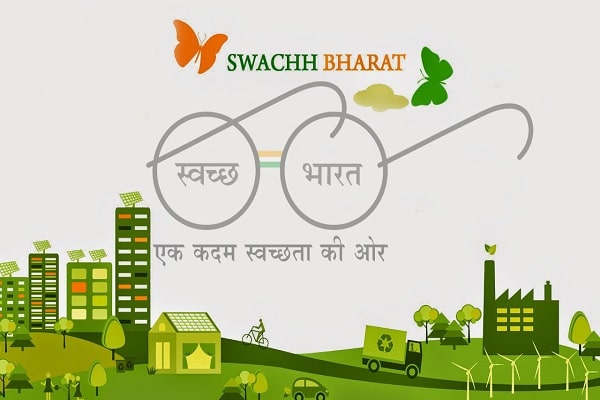
The union government is working on the second phase of its flagship Swachh Bharat mission. The first phase of the mission, which was to end in march 2020 has been extended till 2021. While the ministry of housing and urban affairs is looking to finalise the draft of the second phase it could have increased focus on waste and sludge. It is a wonderful waste management project.
The Swachh Bharat mission was announced by prime minister Narendra Modi in 2014 to make the country garbage and open defecation free. According to the government, since the launch of the scheme 62.09 lakh individual household toilets 5.94 lakh community toilets have been constructed and 99% of the cities have been declared open defecation free (ODF).
Hardeep Singh puri, minister for housing and urban affairs said the mission was constantly evolving and various parameters including tackling the use of single-use plastic have been added to the scheme.
“The Swachh Bharat mission is constantly evolving. The start objective was to build toilets and we have met that target. India has been made open defecation free except for one state. We have gone into ODF++. There has also been an increased focus on reducing the use of single-use plastic. We have morphed into the next level, “puri said.
ECO BRICK:
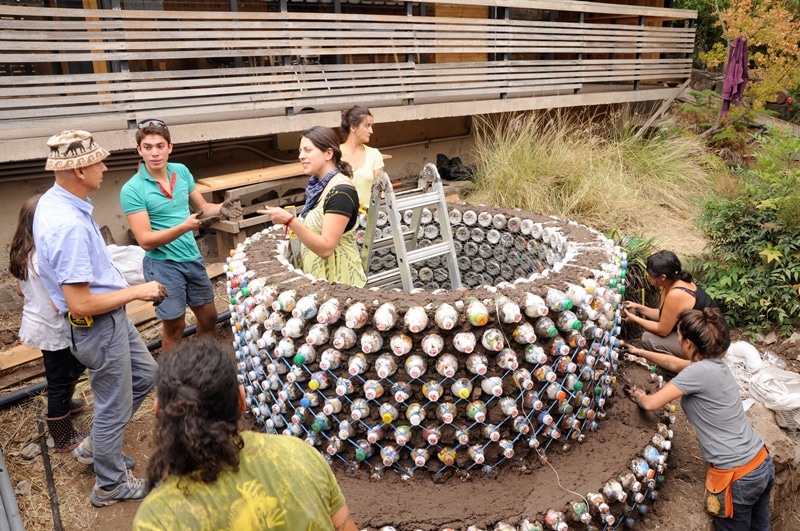
An Eco brick is a plastic bottle packed with used plastic to a set density. They save as reusable building blocks. Eco bricks can be used to produce various items, including furniture, garden walls and other structures. Eco bricks are produced primarily as a means of managing consumed plastic by sequestering it and containing it safely, by terminally reducing the net surface area of the packed plastic to effectively secure the plastic from degrading into toxins and microplastics.
Eco bricking is both an individual & collaborative endeavour. The Eco bricking movement promotes the personal Eco bricking process as a means to raise awareness of the consequences of consumption & the dangers of plastic. It also promotes encourages communities to take collective responsibility for their used plastic and to use it to produce a useful products.
To enable the production of Eco bricks at minimal environmental costs, the global Eco brick alliance promotes low technology methods that do not require capital, fuel electricity or specialized equipment. Typically, producers use a wood or bamboo stick to manually pack plastic into the plastic bottles. Any size of transparent polyethene terephthalate (PET) plastic bottle can be used to make an Eco brick.
The bottle and the packed plastic are clean and dry to prevent the growth of bacteria. Plastic is cut or ripped into small pieces and then packed little by little, alternating between adding the plastic and compacting it, layer by layer. The bottle is rotated with each press to ensure the plastic is evenly compounded throughout the bottles.
This helps prevents voids and that the packing reaches the requisite solidity needed for building block applications. Completed Eco bricks are packed solid of a person without deforming-a density range between 0.33g/ml and 0.7glml.
WASTE TO WONDER PARK DELHI:
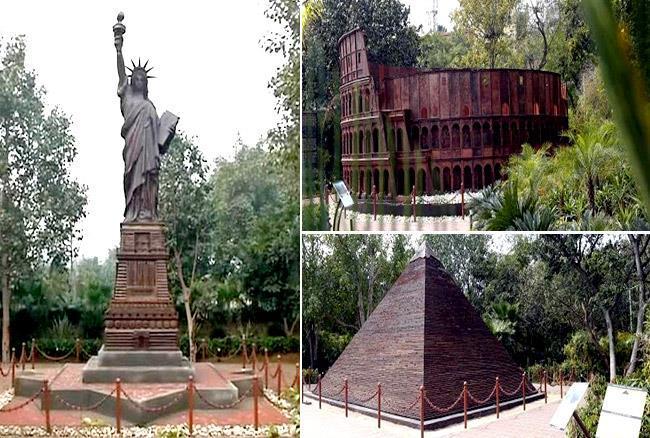
Emphasising waste management project & renewable sources of energy, this new theme park in Delhi, waste To wonders, features the seven wonders of the world, constructed using waste metal products. The park is located near Sarai kale khan inter state bus terminus and is spread across seven across of land. It was inaugurated by the home minister Rajnath Singh on April 18. By Swastika Mukhopadhyay.
- The replicas of the seven wonders of the world are entirely made up of waste products like soup parts of automobiles, metal fans, rods, nuts bolts, iron shuts, non-functional appliances, etc. in total, 150 tonnes of waste have been used to build up these structures.
- The south Delhi Municipal corporation took the initiative to build this park with one objective in mind to conduct meaningful projects that involve waste management and to enhance the aesthetic element of the city.
- While the entry fee to the park is INR 50 for adults and INR 25 for children between ages there to 12, senior citizens above the age of 65 and children up to the age of three enjoy the benefit of free entry.
- The waste to wonder park was constructed within a spare of six months by five artists seven supplementations and to weld. The washrooms inside the park are built using outdated shipping containers.
- There are specific areas dedicated to selfie lovers. Giving way to the latest craze of the selfie, the builders of the park have ensured a designated area for people wishing to click selfies.
World’s 1st theme with all the seven wonders replicated using waste products!
The park houses miniature replicas of the Taj Mahal (India) Eiffel Tower(France), Leaning Tower of Pisa (Italy), The Statue of Liberty (USA), Christ the Redeemer (Brazil), The Great Pyramid of Giza (Egypt ), Colosseum (Italy). Waste to wonders park is inspired by the T wonders park in Kota, Rajasthan
The park project was born out of the ‘Filmy’ idea. The film was “Badrinath Ki Dulhania.” Really!
About 150 tonnes of industrial and other waste was used! kind of material used: waste auto parts, a cycle chain, can engines, truck springs, petrol tanks and what not!
The cost of the project is 7,50,00,000 Rupees (that’s 7.5 crores or 75 million )!
RECYCLE COUPLE JODHPUR:
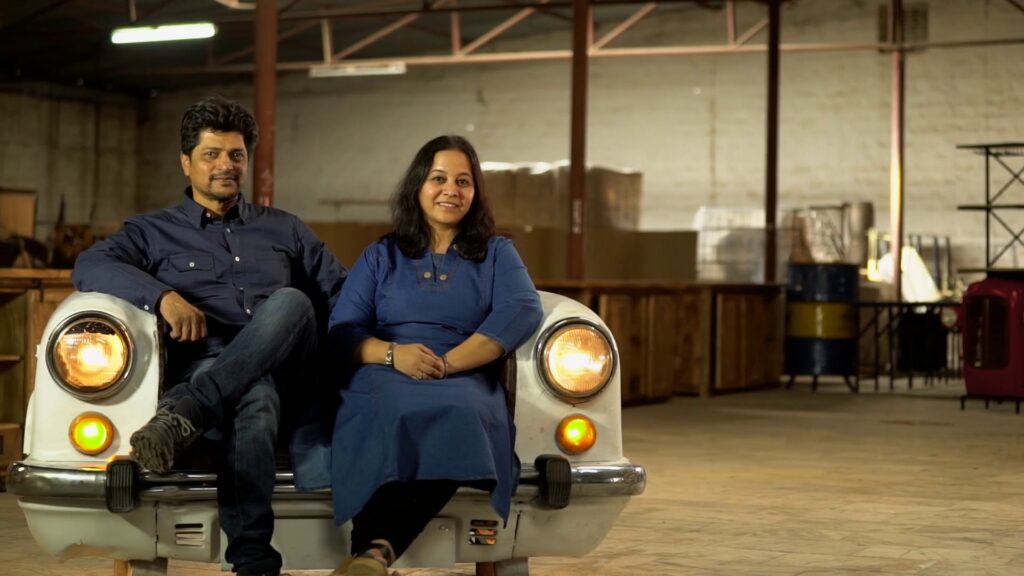
Priti International ltd. Is led by the team of Mr G. Lohiya, Mr Hritesh Lohiya & Mrs Priti Lohiya. Who started this business from home with self-motivation and ideas.
Priti International Ltd has become a household name in the home furnishing segment by offering products of great value which has redefined the category itself. Started as a furniture manufacturer. Company lifestyle. We are one of the fastest-growing establishments that have rejuvenated the traditional concept.
Something similar happened to us in 2005. Priti International Ltd (PIL) was established with a hang jodhpur. Our first step on the journey to success. Our commitment to high standards of quality enabled our path. Our vision enabled us to deliver perfection with each order and helped us to leaver and improve ourselves with each product we delivered. Buyers from US, EU & Australia appreciated are work and repeat orders poured in. it didn’t take us long to realize that we had grown into a company with 80 employees & other 100+skilled artisans.
PIL has rightfully earned a favourable reputation for high-quality designs and products in both domestic and international markets. Customers recognize Priti as a name they can trust. At present, our products are exported to the USA, Spain, Holland, Turkey China and many other destinations. For us, the journey has been fabulous and we plan to continue on it. Learning and evolving with each step we take.
Priti International Ltd – Strength:
We believe our workers are the ones who have helped us achieve everything that we have today. They are the ones delivering the quality products that make us the customers favoured choice we value our workers and have provided. Them with the best working facilities and conveniences. We are committed to our workers, vendors & preserving the environment.
Priti International Ltd – The Indian Edge:
Lifestyle changes have attributed to design developments & impact on the types of furniture desired while elegance has become more mainstream, the blending of traditional and contemporary styling is quite evident in consumer tastes. Priti International Ltd. Not only excel in exquisite artistry but also reflect the rich cultural heritage in the form of colours, motifs and raw materials.
Friends, we Indians have a knack for hacks. There’s a couple in Jodhpur who have hacks up their sleeve. They have changed people’s mindset towards waste with their hacks.
These hacks are happening in the Priti International workshop. Where waste is recycled into a new and is sold in the International market
Hitesh and Priti have made such amazing products which makes them our Recycle couple. Before making these Funky products, they tried many other businesses like chemical factory stone cutting factories but they were not successful. Then one day they got a life-changing brilliant idea.
They wanted to start with something different so there was a very old tin box and they through of making something unique out of it. So keeping the recycling concept in mind, they made a cushion and by chance that product was a hit. First-order was from Denmark for 100 drums stools and slowly their business started picking up after getting so many orders, the demand for raw materials also increased and in search of the raw materials they visited the dump yards all over the country.
CONCLUSION:
Globally there are considerable differences in waste management practices. In some regions, formal services for the collection of waste are absent (or limited) and when waste is collected the prevailing practice is uncontrolled open dumping causing social, health and environmental risks. To quantify the situation, around half of the world’s population has no access to waste services and around ¼ of the world’s waste is wantonly dumped.
At the other end of the scale highly sophisticated integrated and sustainable waste management practices exist where waste is considered and used as a resource and only used very small quantities of waste remain and are safely disposed of. A sound investment in waste management infrastructure, equipment and services that support the local economy, utilise local expertise and minimise environmental and social costs can be costly, but their absence can be equally as costly.
A poorly managed waste system imposes social and environmental costs and economic losses, whereas a properly functioning resources management/waste system brings benefits across all of these elements. Many of the best strategies for waste reduction, recycling and composting produce benefits for a quadruple bottom line.
They require less capital investment, create more jobs and sustain more livelihoods, protect public health, provide secondary material to production processes and minimize CO2 es emissions. For the waste sector to support the progression toward a green economy not only do we need to maximize resource efficiency considering the whole lifecycle of products (cradle to cradle approach) but also the way we value enterprises where factors such as the creation of sustainable employment and protection of the environment are valued alongside economic growth and profit.
BIBLIOGRAPHY:
- Teacher
- Books
- Friends
- Internet-
- https://www.google.co.in/amp/s/
- www.inuth.com/india/explained-what-does-three-coloured-dustbin-mean-and-why-India-needs-it-urgently/lite/
- http://global-recycling.info/archives/2898
- http://www.google.co.in/search?q=methods+of+waste+disposal&ie=UTF-8&hl=en=in&client=safari
CERTIFICATE:
This is to certify that class Xll, of ——, has completed the waste management project under my supervision. He has taken proper care and shown almost sincerity in the completion of this project. I certify that this project is up to my expectations and as per the guidelines issued by CBSE.
ACKNOWLEDGEMENT:
I would like to express my special thanks of gratitude to my teacher as well as our principal of the school who gave me the golden opportunity to do this wonderful WASTE MANAGEMENT PROJECT which also helped me in doing a lot of research and I came to know about so many new things, I am thankful to them. Secondly, I would also like to thank my parent and friends who helped me a lot In finalizing this project within the limited time frame.
DOWNLOAD PDF OF THE PROJECT
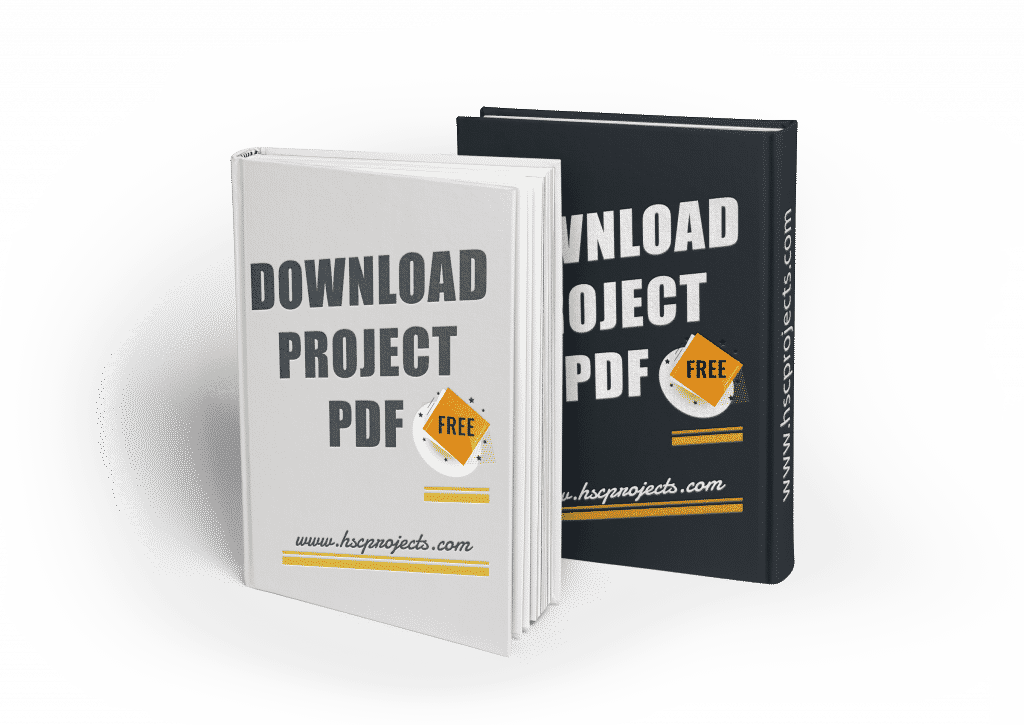
Password: hscprojects.com
In order to download the PDF, You must follow on Youtube. Once done, Click on Submit
Follow On YoutubeSubscribed? Click on Confirm
Download Waste Management Project with 2 Case Studies – Economics PDF






